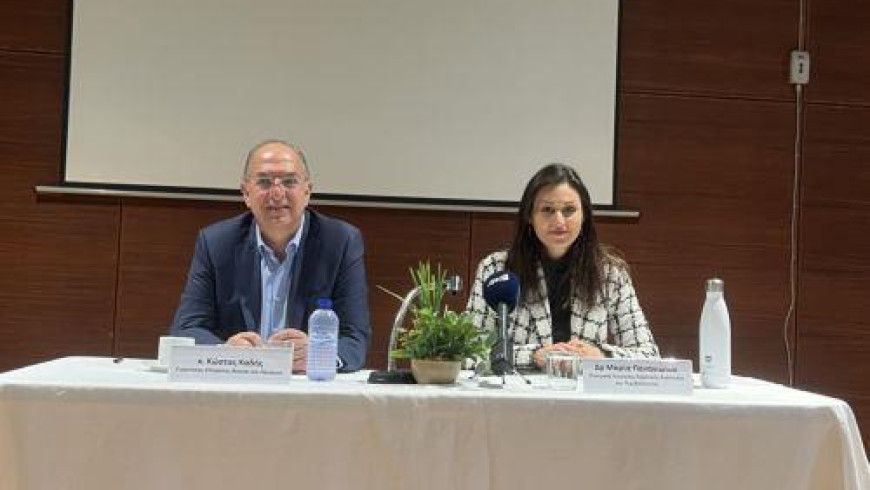
The Statistical Service announced on Friday the final results of the Census of Population and Housing 2021, which was conducted in the Government controlled areas of Cyprus. According to the data, Cyprus population, which on October 1st 2021 reached 923,381 persons, is aging. Moreover, it seems that population in rural areas did not decrease, while people with a university degree increased significantly.
Out of 923,381 persons, 449,708 were males and 473,673 females. The total population recorded an increase of 9.9% compared to the results of the Census of Population and Housing 2011 in which 840,407 persons were enumerated, 408,780 males and 431,627 females.
Restrained urbanization
A proportion of 66.7% of the population enumerated (615,603 persons) resided in urban areas, whereas 33.3% (307,778 persons) resided in rural areas. The corresponding percentages in the 2011 Census of Population were 67.4% (566,191) and 32.6% (274,216) respectively, thus indicating that a decrease in the population of rural areas was not observed, even though in some remote or mountainous communities some decrease in the number of residents was observed.
Τhe population distribution by district was as follows: 350,035 persons or 37.9% resided in Nicosia district, 262,157 (28.4%) resided in Limassol district, 155,765 (16.9%) in Larnaka district, 101,106 (10.9%) in Pafos district and 54,318 (5.9%) in Famagusta district.
Compared to the results of the 2011 Population Census, the largest percentage population increase (16.5%) was recorded in Famagusta district, followed by the districts of Pafos (14.5%) and Limassol (11.4%).
Aging population
The percentage of persons aged less than 15 years reached 15.4%, the percentage of persons in the age group 15-64 years reached 67.3% and the percentage of persons aged 65 years and over reached 17.2%. The percentage of persons aged 65 years and over has exceeded the percentage of persons aged less than 15 years, indicative of the ageing of the population. The phenomenon of population ageing is observed in most European countries.
The results display that the percentage of children (aged less than 15 years) has decreased from 16.1% in 2011 to 15.4% in 2021 and the percentage of persons aged 65 years and over has increased from 13.3% in 2011 to 17.2% in 2021.
Population by citizenship and country of birth
As regards the population enumerated by citizenship, 719,252 persons or 77.9% were Cypriots, 93,540 (10.1%) were European Union (EU) citizens (except Cypriots), mainly from Greece (4.7%), Romania (2.2%) and Bulgaria (1.8%), while 107,168 persons (11.6%) were non-EU citizens, mainly from the United Kingdom (2%), Syria (1.4%) and Russia (1.3%).
The largest proportion of foreign citizens to the total population of the district is observed in Pafos district (40%), the second largest in Famagusta district (23.6%), followed by Limassol district (21.7%), Larnaka district (19.2%) and finally Nicosia district (17.3%)
Of the total population enumerated, 688,844 persons or 74.6% were born in Cyprus, 86,026 or 9.3% were born in other EU countries, mainly Greece (3.8%), Romania (2.1%) and Bulgaria (1.8%), while 142,514 or 15.4% were born in non-EU countries, mainly the United Kingdom (3%), Russia (1.8%) and Syria (1.3%).
Population by Educational Attainment
The educational attainment of the population aged 15 years and over, which numbered 780,770 persons, was distributed as follows: 2% had not completed primary education, 11.6% had completed primary education, 9.7% had completed lower secondary education (Gymnasium), 36.6% had completed upper secondary education (Lyceum/Technical), 3.4% post-secondary non-tertiary, 6% tertiary level non-university and 27.6% tertiary - university level (19.8% first degree, 7.1% post-graduate degree and 0.7% doctorate).
The percentage of the population aged 15 and over with tertiary education (university level) has increased significantly. Specifically, this percentage has increased from 20.2% in 2011 to 27.6% in 2021. The percentage of females who have completed tertiary education (university level) is slightly higher (28.1%) than the corresponding percentage of males (27.1%). The corresponding percentages in 2011 were 20.2% for females and 20.3% for males.
Housing Units
Of the 492,931 housing units enumerated, 354,818 were of usual residence while 138,113 were vacant or of temporary residence. Regarding the geographical distribution of housing units, 298,020 (60.5%) were enumerated in urban areas and 194,911 (39.5%) in rural areas. A total of 163,350 (33.1%) were recorded in Lefkosia district, 132,574 (26.9%) in Limassol district, 82,274 (16.7%) in Larnaka district, 74,473 (15.1%) in Pafos district, and 40,260 (8.2%) in Famagusta district.
Compared to the results of the 2011 Census, Famagusta district displays the largest increase in the number of housing units (17.9%) followed by Limassol district (15.6%) and Nicosia district (13%).
Of the 492,931 housing units enumerated, 491,545 were conventional dwellings, meaning that they were constructed for habitation, while 1,386 were non-conventional dwellings, meaning that they were not built for habitation, however they were used as a place of residence by one or more persons (e.g. a commercial store that was used for habitation).
Of the 491,545 conventional dwellings, 353,432 were occupied, of which 247,019 (69.9%) were owner-occupied, 74,809 (21.2%) were rented and 17,890 were provided for free (5.1%), while 12,397 (3.5%) had a different tenure status.
Households
A total of 357,858 households were enumerated in 2021 (compared to 303,242 in 2011), with average household size of 2.57 persons (2.76 in 2011), 2.51 in urban areas (2.70 in 2011) and 2.68 in rural areas (2.88 in 2011).
Famagusta was the district with the largest average household size (2.66) whereas Nicosia was the district with the smallest (2.51). The largest increase in the number of households, compared to the 2011 Census, is recorded in Famagusta district (29.1%), followed by Pafos district (20%).
A total of 112,305 households (31.4%) comprised non-family households, 237,936 households (66.5%) were households with one family nucleus and the remaining 7,617 (2.1%) were households with two or more families. The corresponding percentages in 2011 were 25.3% non-family households, 72.4% one-family households and 2.3% households with two or more families.














 3287.99
3287.99 1275.09
1275.09
